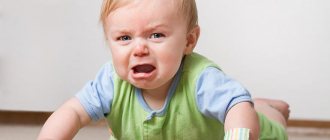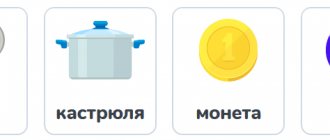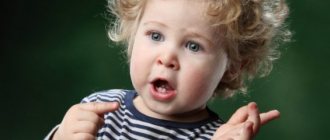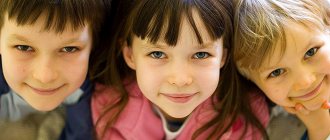I.A. Galkina (Ph.D.)
A holiday is a special state of mind, an emotional joyful upsurge caused by the experience of some special event. Holidays are of great importance for every person, but they are especially important for kids who look forward to them with great impatience and the most sincere joy. In preschool age, the foundations for all future development are laid. It is at this age that independent thinking is activated, children’s cognitive interest and curiosity develops. This is the most important stage in the development and education of the individual, the period of the child’s familiarization with the knowledge of the world around him and his entry into society. In this regard, the education of preschoolers’ artistic taste, the formation of their creative skills, and their awareness of the sense of beauty is of particular relevance. Children receive all this thanks to holidays, which are a real miracle for them, in which they themselves take a direct part. “Let everyone remember their childhood, and he will see that a holiday for a child is not at all the same as for us, that this is really an event in a child’s life and that a child counts his days from holiday to holiday. Childhood would be dull and gray if the Holidays were thrown out of it...” wrote K. D. Ushinsky.
Holidays and entertainment are bright and joyful events in the lives of preschool children. Combining various types of art, they have a great influence on the feelings and consciousness of children. Preparation and holding of holidays and entertainment serve the moral education of children; works of folklore, songs and poems about the Motherland, nature, and work form patriotic feelings; Participation in holidays and entertainment develops discipline and a culture of behavior in preschoolers. By learning songs, poems, and dances, children learn a lot of new things about the world and people. The festive atmosphere, the beauty of the room design, costumes, a well-chosen repertoire, the colorful performances of children - all these are important factors in aesthetic education. Aesthetic education is the most important component in the process of raising and developing a child. It contributes to the enrichment of sensory experience, the emotional sphere of the individual, affects the knowledge of the moral side of reality (it is known that for a preschooler the concepts of “beautiful” and “kind” are almost identical), increases cognitive activity, and even affects physical development.
The result of aesthetic education is aesthetic development. The participation of children in singing, games, round dances, and dancing strengthens and develops the child’s body, improves coordination of movements, develops the child’s body, improves coordination of movements. A holiday is also an excellent situation for activating speech and its communicative function. Thus, the holiday reveals the richest opportunities for the comprehensive development of the child. Holidays spiritually enrich a child, expand his knowledge about the world around him, help restore old and good traditions, unite children and adults, and encourage creativity.
When preparing holidays, adults should first of all focus on the interests of each specific child or group of children for whom this or that holiday is being prepared. And the main criterion for selecting material here is entertainment, brightness and fun. At the heart of every holiday and entertainment is a certain idea that should be conveyed to every child. This idea should run through the entire content of the holiday. Songs, poems, music, dances, dramatizations, and decoration serve to reveal the idea of the holiday. The idea of the holiday should be conveyed to each child, taking into account age and individual characteristics. In this case, a number of factors are taken into account: the children’s already existing repertoire, the level of development of their vocal and motor skills, and interests. Finally, speaking about the accessibility of the holiday, you should also remember about the time it is held. In children of primary and middle preschool age, fatigue occurs much earlier than in older preschoolers. Children from 2 to 4.5 - 5 years old are able to perceive a much smaller number of poems, songs, etc. Therefore, the duration of the holiday for them should not exceed 20-30 minutes. For older preschoolers, its duration increases to 45-55 minutes. and the repertoire becomes much richer and more diverse.
The holiday should be emotionally rich. The beauty of the setting, the solemnity of the music, the general high spirits - all this increases receptivity. Children want to actively participate in the holiday; they are not satisfied with the role of observers. And the adult is given the opportunity to satisfy the desires and need for activity of each child. You just need to choose the right form of manifestation for each. One will read poetry, another will sing, the third will dance.
The role of family holidays in a child’s life
In a person’s life, the personal and the public are closely intertwined. Holidays associated with the history of the country, with its traditions and rituals, allow a person to realize his unity with all the people. Through participation in festivities, a person becomes familiar with the spiritual culture of the people and feels involved in it. The world of kindness, beauty and harmony opens up to a person through the holidays. All holidays pass through the family and enter every home.
Family holidays contain rich potential for child development. A child needs a happy childhood; without it, a person will not be able to learn to fully love, and his emotional development as a whole will suffer. Without exaggeration, we can say that his personal life, his future family, and his activities will largely depend on the emotional state of the child’s holidays. All holidays, and children's holidays in particular, require not so much time and money as warmth and love.
Birthday
Among all family holidays, the most important for each family member should be Birthday. It is on this day that the attitude of the whole family towards the birthday boy is manifested. In turn, he has the opportunity to express his love and gratitude to each family member.
Birthday celebrations are prepared in advance, and if possible, everyone should take part in it. It is necessary to take into account the age characteristics of children: the younger the child, the brighter the holiday should be. This day is full of surprises and surprises. It’s good if there is an opportunity to capture this day, so that later a whole series of photographs of different ages can be formed. You should also try to save all the postcards you receive; then, using the texts of these congratulations, it is interesting to follow the changes in the child’s character and his hobbies. It is desirable that the congratulations be in verse, and also relate specifically to this person. It is better to compose poems yourself, even if they are not so perfect, they will be remembered better.
In families where a child grows up surrounded by brothers and sisters, there is a wonderful opportunity to use collective creative activities that unite children, teach mutual understanding and mutual respect. In collective work, everyone can show their abilities more clearly - write poetry, draw a newspaper, design a collage, make an appliqué and come up with much more.
The most exciting moment in the life of every birthday person is receiving gifts. Adults should think about giving a gift. The child will be pleased to see his gift immediately after waking up, next to his crib. In a family, not only close people, friends, but also favorite toys can congratulate a child on his birthday. For example, dolls can congratulate a girl, each doll can have her own gift. For a boy on his birthday, gifts can be brought on all his cars, where his new things can be on each one. Gifts can be waiting for a child everywhere: under a pillow, under a plate, in a basket of toys, on his bookshelf.
Handmade gifts or gifts with meaning are given in person. For memorable gifts, you can arrange a folder or shelf, and later pass this entire small archive to your children or grandchildren. The fact that in the family there is no division into “bad” and “good” gifts is also of educational importance. Everything that can be saved is stored.
Important elements of the holiday are decorating the room to create a festive mood. The birthday person can also take part in the decoration. From the chandelier to the cornice, you can stretch garlands on which the name of the hero of the occasion or “Congratulations” is written in separate letters. It’s nice to see a funny face on the mirror on your birthday, drawn with tinted toothpaste, and balloons above the ceiling. You can decorate the birthday boy’s armchair or chair by draping it with fabric.
You need to think through the menu in advance. This is also a great educational moment: children learn to behave correctly and gracefully, and most importantly freely, at an already set table. All dishes are decorated according to the age of the birthday person. It is better for children to serve individual well-decorated plates. Everyone is waiting for the birthday cake. The cake must be decorated with candles. This ritual, extinguishing candles and making a wish, is fascinating for everyone.
Various games are played during the celebration. You can hold a competition for the best compliment. Children also enjoy playing lotteries. Various small objects (threads, needles, pens, pencils, etc.) will be useful for this. In the wish lottery, wishes are written on separate pieces of paper, rolled up, and placed in a hat. Then everyone chooses a piece of paper. Comic wishes cause general merriment.
It’s interesting to play the game “What would that mean?” A photograph is glued to separate sheets of paper (maybe the birthday boy, or one of the guests), which depicts a funny, atypical situation. Each participant in the game signs and wraps it, passing it to another, thus preparing several photographs. All signatures are then read aloud, and the wittiest ones are awarded souvenirs. Surprises can be interesting wishes written on hearts; they are presented to the birthday person or all guests. Guests can receive birthday cake roses made from dough appropriate to the age of the birthday boy as a gift. Performing your favorite songs accompanied by a piano or karaoke will also bring great pleasure to everyone. You can also compose a song to a familiar melody, which reflects the life of the birthday person.
Celebrating family events
In the family, children participate in the celebration of their parents' birthdays. Parents are always pleased to receive gifts made by their child on their birthday: photo albums, postcards, drawings, applications, photo collages, etc.
Celebrating the parents' wedding day is a celebration of the family's birthday. The content of the holiday may include competitions dedicated to the “newlyweds” or interviews, when mom and dad openly answer various questions. Parents thereby maintain family ties and instill in their children a sense of responsibility and pride in their family. Getting to know your ancestry gives you a lot of new and useful things: the most important thing is that children develop a sense of belonging to the family and the Motherland as a whole. Thanks to the stories of grandparents, you can find out the ancestry of several generations and create a family tree of your family.
In general, any family event, even a small trip, can be turned into a holiday. For example, in the spring it is good to organize a trip to the forest to pick snowdrops. It is always a great joy to see the awakening of nature, the powerful force of green sprouts that reach for the sun. Meetings with nature are a trip to the world of beauty and harmony, and it is always a holiday. Not only a flower, but also any very beautiful place can be “imprinted” in memory. Many years later, when you remember this, a picture of this place and the memory of the holiday will appear before your eyes.
In our educational center , teachers and administration pay special attention to the aesthetic education of children and the organization of various holidays: “Farewell to Autumn”, “Welcome to Winter”, “New Year”, “Christmas”, “Farewell to Winter”, “Maslenitsa”, “Defender of the Fatherland Day” ", "Welcoming of Spring", "International Women's Day on the Eighth of March", "Easter", "Victory Day", "International Children's Day" and others. At the request of parents, it is possible to organize a festive congratulation of the child on his birthday in a peer group. Like the holidays, there are also open lessons before the New Year and at the end of the school year, where children not only show their parents what they have learned over the past time, but also play, participate in various contests and competitions, receive prizes, and such events, of course, , remain in the memory of children like holidays .
Stages and eras
According to Elkonin’s scientific theory, the entire period of childhood can be divided into 3 main eras, the transition between which is caused by the emergence of an internal crisis. The child begins to feel a contradiction between the acquired operational and technical skills and the motivational sphere that is currently present. Each era of growing up includes 2 periods of development.
Age periodization according to Elkonin
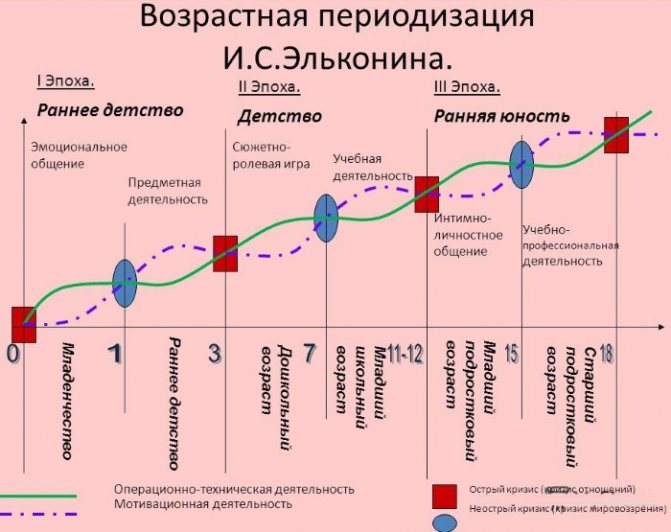
Depending on the social, everyday and psychological conditions in which the child grew up, intermediate phases of growing up can be distinguished. Elkonin’s age periodization does not include prenatal development, since in this case completely different mechanisms of organic maturation operate. Below are the main eras and periods of growing up for children of all age groups.
I Epoch. Earlier childhood
This age period lasts from the moment the child is born and ends after reaching the age of 3 years. Its beginning is considered to be the onset of the neonatal crisis, when a contradiction occurs between the absolute helplessness of the baby and his complete dependence on the adults in his immediate environment.
At the same time, the newborn does not have ready-made forms and skills for independent communication. The resolution of the social and psychological crisis occurs within 2 months. baby's life.
Infancy
This age period begins after the child reaches 2 months. and lasts up to 1 year. The social aspect of development is characterized by complete connection with the mother.
All types of social activity of the child are manifested in relation to the adult who provides care and spends the greatest amount of personal time with him. In child psychology, this relationship is called the term “Prime-We”.
The leading activity of the child is the motivational aspect in the constant desire to communicate with adults. At this period of growing up, the child acquires emotionally charged ideas, distinguishes himself from the rest of the mass of people, distinguishes his reflection in the mirror, and acquires the skills of independent walking.
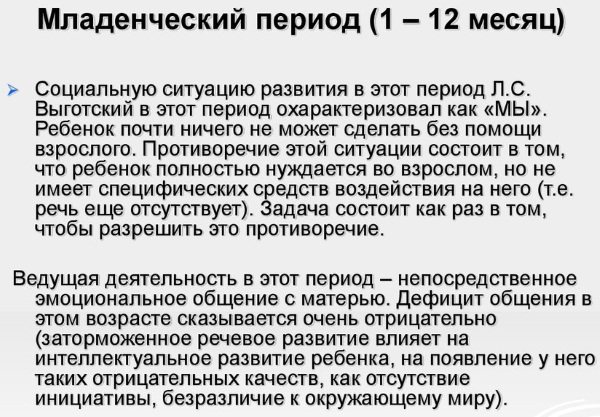
Late and early infancy are distinguished. In the latter case, situational and personal perception develops. In late infancy, the formation of situational and business communication skills occurs with the development of motor functions. The next stage of the age crisis occurs upon reaching 1 year.
Early childhood period
In age periodization, this period lasts from 1 year until the child reaches 3 years. Social development is characterized by the emergence of relative independence, autonomy in movement around the house, as well as in other environmental conditions.
The child develops an increased interest in objects, which ultimately causes the need to change the usual form of communication. In the eyes of children of this age, adults are perceived as the main assistants, and not as intermediaries between them and the objects of the surrounding world.
During early childhood, the main leading activity of the child is establishing contacts with surrounding objects, which perform the function of a social tool. Children begin to actively develop speech abilities, as well as the desire to perform tasks that adults are busy with.
The child develops his own “I” and feels like a full-fledged subject of society. After praise or successful completion of assigned tasks, children of this age already develop a feeling of pride and success.
The end of early childhood is also associated with a growing crisis of social development. As the child grows up, the format of communication with the adults in his environment changes. Children demand more autonomy.
The age crisis of transition to a new stage of development is accompanied by vivid symptoms in the form of the following psycho-emotional reactions:
- devaluation of the role of adults;
- desire for violence and despotism;
- obstinacy;
- pronounced stubbornness;
- self-will.
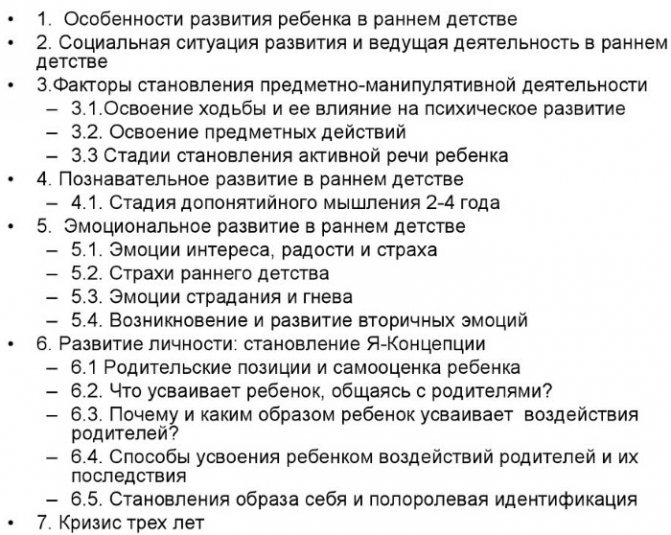
The degree of intensity of the above symptoms directly depends on the conditions in which the child is raised, as well as on the reaction of the adult environment.
II Epoch. Childhood
This era of periodization according to Elkonin covers the period of growing up of children aged from 3 to 11 years. The period of preschool development and the years of schooling are integrated into its composition.
Preschool period
In the period of preschool childhood there are children aged from 3 to 7 years. This is the next stage of growing up, when the child experiences a breakdown in the relationship between joint activities with people in their immediate environment.
The behavior of adults is perceived as a role model. The child begins to repeat the same tasks that the people around him were previously busy with. The main activity of children of this age is role-playing games.
During preschool childhood, children acquire the following skills and abilities that were previously unavailable to them:
- overcoming feelings of egocentrism;
- understanding of the first ethical rules, as well as awareness of good and bad actions;
- ability for visual-figurative thinking;
- the formation of a motivational hierarchy, when the child is able to independently determine the need to fulfill primary and secondary needs;
- feeling of your own inner world;
- the emergence of a confident position of the future student, a thirst for learning or refusal to attend general education institutions;
- motivation for active knowledge of the world around us.
The transition from the period of preschool childhood to the next stage of growing up is accompanied by another social crisis, which occurs at the age of 7 years. Its appearance is connected with the presence of internal experiences, as well as the personal attitude of children to the world around them.
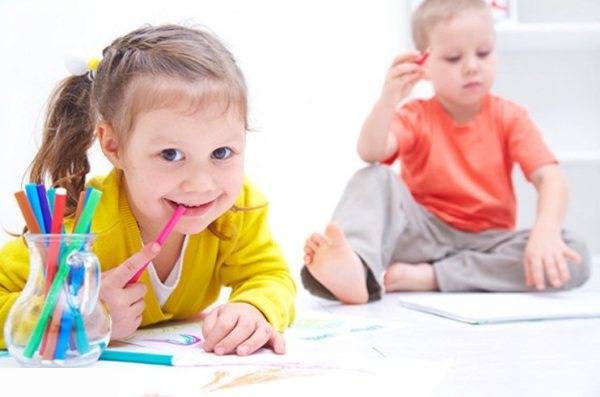
The main signs of the crisis are as follows:
- frequent mannerisms, when a child plays a role, pretends to be a hero of fairy tales, cartoons, animals;
- the first secrets and reflection on one’s actions appear;
- the motive for mandatory compliance with behavioral norms becomes more important than the desire to receive a specific item (toy, sweets, environmental objects).
Upon reaching the age of 7 years, children clearly distinguish between good and evil, and may also not rejoice at objects that they received dishonestly.
Primary school age
This age period is typical for children aged from 7 to 11 years. The social development of a child is characterized by a sharp change in the format of life. Children are surrounded by social adults, who are teachers of general education institutions.
The main leading activity of the child is study, aimed at mastering a large amount of knowledge in various areas of life. The consciousness of children is absorbed in the operational and technical sphere, the presence of which is only possible if they regularly attend school.
During primary school age, a child acquires the following skills:
- voluntary course of mental processes and development of consciousness;
- ability for long-term planning;
- theoretical type of thinking;
- reflection;
- formation of stable will and determination in the process of implementing assigned tasks;
- intellectualization of mental functions.
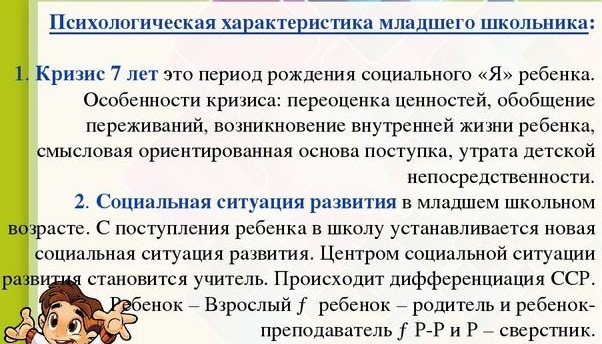
With the onset of the next crisis of social development, an entire era of childhood ends. On average, this happens when children turn 12 years old. Due to the onset of puberty, the child gains the ability to reflect on his actions and feelings.
III Epoch. Adolescence
This is the final era of age periodization according to Elkonin, which concerns children aged 12 to 17 years, and also includes 2 main periods of adolescence.
Early adolescence
The period of development of children of early adolescence begins after they turn 12 years old and continues until they reach 15 years old. This stage of a child’s maturation is characterized by an expansion of the scope of his social activity.
The format of communication with parents, peers, and teachers of general education institutions is undergoing radical changes. The transition to the middle classes is accompanied by an increase in the number of teachers and an expansion of areas of interest.
Relationships with peers are built not only on the desire to establish friendly social connections, but also contain elements of expressed sympathy. Children are instilled with moral standards regarding the regulation of interpersonal relationships.
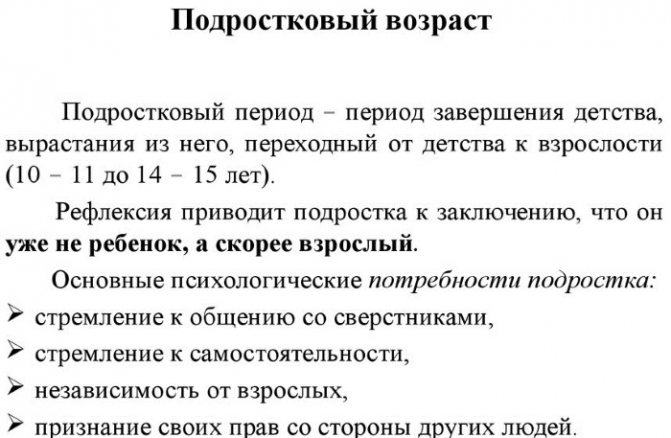
During this period of growing up, the leading activity of children is getting to know another person, intimate and personal communication with their peers, and learning the rules of social behavior.
The child’s consciousness is in the conditions of the motivational-need sphere. New sensations are acquired in the form of a sense of adulthood, the discovery of one’s renewed “I”, which is built on the basis of self-awareness and personal reflection. The next crisis of social development occurs at the age of 15 years.
Children feel like adults, which makes them want to get a new place in society. There is a thirst for equal relationships with parents and other people around. At the same moment, adults are psychologically unprepared for this.
Period of late adolescence
This is the shortest period of development in which children aged 15 to 17 years are found. At this stage, the child’s character undergoes qualitative changes caused by active learning activities and self-education.
Being in a variety of sports sections, courses, electives, communicating with tutors and teachers, one finds oneself in the process of choosing a future profession. The main activity of children in this age group is the acquisition of knowledge and scientific concepts, which after graduation will allow them to self-determinate in their future life path.
The era of adolescence also ends with an identity crisis, which occurs at the age of 17. Its appearance is associated with the entry of children into the realities of adult life, a radical change in their social circle and type of activity. The child is faced with a choice of further path.
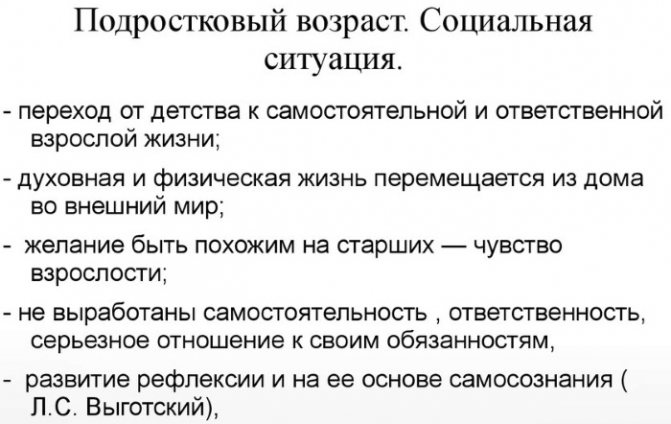
Children continue their education by entering specialized educational institutions, get jobs that do not require professional skills, or do not take any measures to further develop their personality. In his works D.B. Elkonin draws attention to the fact that after children reach 17 years of age, it is almost impossible to create further age periodization.
